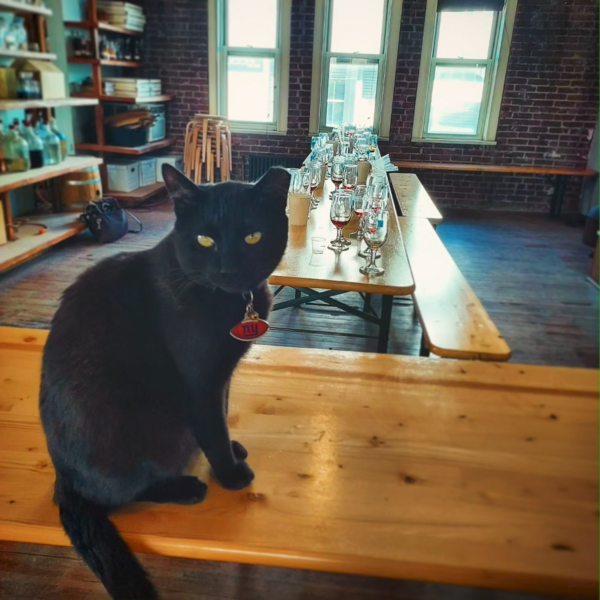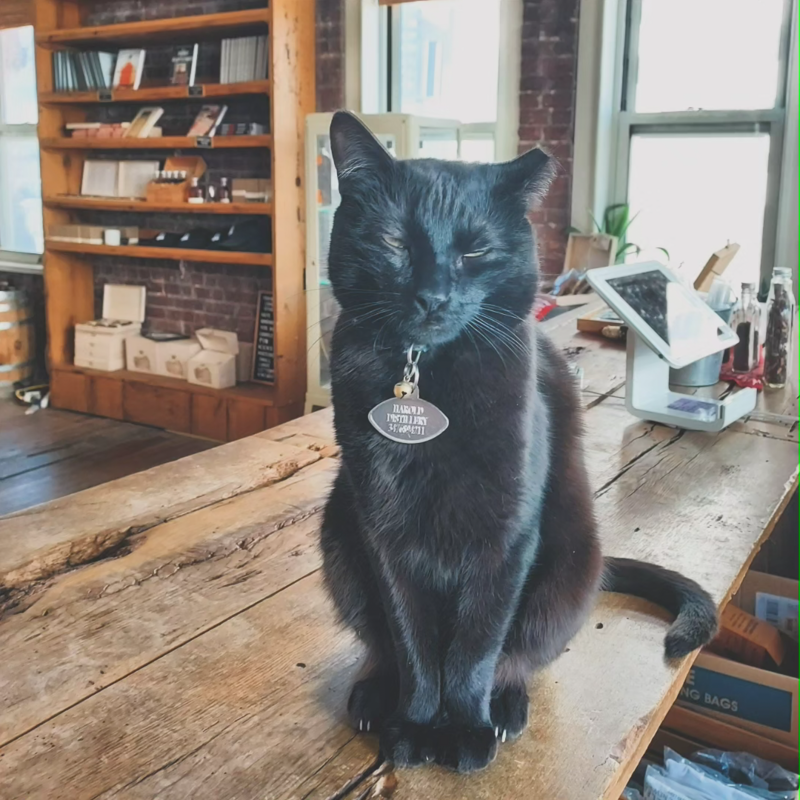Working Cats: A Brief History of Human-Feline Partnerships
From ancient grain stores to modern distilleries, cats have shared our spaces throughout history, providing pest control and companionship while shaping culture and ecology.
When the first drops of whiskey were distilled in medieval Ireland, a silent helper stood nearby. Furred, four-legged, and always ready to deal with unwelcome mice, the cat thus began its long relationship with the distilling industry.
The domestic cat, Felis catus, is a distinct species separate from its wild African ancestors. The first domestic cats evolved to become part of human settlements, inhabiting this niche as both wild, independent animals and part of the human milieu. Agricultural surpluses provided food for rodents, which, in turn, supported a population of cats.
Over time, cats became more personable and fearless, helping to eliminate animals that devoured or spoiled food, chewed on infrastructure, spread disease, and carried parasites that could sicken humans. Domestic cats provided human societies with a significant evolutionary advantage.
People also fell in love with cats. Entire cultures incorporated cats into their secular traditions, religions, and arts. Although cats became domesticated, they retained the hunting prowess of their wild forebears. The care that mother cats lavished on their kittens made them icons of maternity. Their movements in the shadows throughout the day and night linked them with the unknown and the supernatural. These associations continue to this day.
By the Middle Ages, the cat’s ability to catch rodents had made it an agricultural, domestic, and economic necessity to such a degree that its role was codified in law. In Wales, for example, if you were sold a cat that did not catch mice, you could return the feline and demand a refund of one-third of the cat’s price.
We can say with confidence that a cat was present when whiskey was first distilled because it would have been protecting the grain. Thus, among distilleries and breweries, a long tradition of keeping cats began. After his death, Smitty, the Jameson distillery cat, was taxidermied and preserved in the old Jameson Distillery museum. He was said to have caught as many as 20 mice per day and was so highly regarded that special funds were allocated to his care. In the 1960s, Glenturret, a Scotch distillery, had a cat named Towser the Mouser, who, having caught nearly 30,000 mice in her lifetime, holds the Guinness World Record. A statue now stands in honor of her 24 years of service. Highland Park Distillery in Kirkwall, Scotland, kept cats on staff from its founding in 1789 until 2006. The tradition of distillery cats also continues in the United States, enjoying new life in the craft spirit and brewing movements.
American distillery cats are a rare continuation of working cats, which were once commonplace in the United States. Every business, from grocery stores to restaurants, kept cats as a means of deterring or catching rodents. Cats have been forced out of these jobs by health departments, with some exceptions (such as the celebrated bodega cats of New York City or the cats of the Algonquin Hotel).
Bringing cats back into the workplace, their historic ecological domain, means returning them to their natural habitat. This practice can help provide a safe haven for homeless cats in need. A working environment is an excellent milieu for cats that would not thrive in a house or apartment. When cats are placed in a store, distillery, or other workplace, they are left alone but still provided for with food and shelter. Once acclimated to their new environment, they are free to just be cats. Often, these cats, without other pressures and given time, will form relationships with humans on their own terms. This was the case for both Harold and Maude, whose story follows.
In 2021, Harold and Maude arrived at Kings County Distillery in Brooklyn, New York, shortly after I began working there as a distillery tour guide. Harold was a large black cat with golden eyes and a clipped ear, which indicated that he had been neutered. He entered the NYC Animal Care Centers after being found in a box outside a library. By age five, he had lived most of his life at the distillery.

Maude, who, as of 2025, was approximately 10 years old, was a predominantly black calico cat with jade-green eyes and white fur on her feet and stomach. She was rescued from a hoarding situation. If she liked someone, she would follow them at a distance, mewing, but would never allow anyone to touch her.
Both Harold and Maude were taken out of a shelter where they were close to being euthanized for perceived poor behavior. Sheila Massey, head of Hard Hat Cats, New York City’s only working-cat program, believed they had a chance of becoming working cats. She was right. Through their experience as workers, Harold and Maude were able to rehabilitate themselves. Maude became much less scared of humans, though she always set her own boundaries. Harold became a completely different cat from when he arrived. He developed a friendly demeanor and was a true ambassador for the distillery. With free rein, he chose to be near people, stepping into the middle of tours, following employees around, and rubbing against the legs of guests. During the tasting portion of a tour, he would hop on a bench alongside the long tables of whiskey drinkers as though he were the maître d’, making sure everyone was having a good time.
Critics of cats argue that they are inefficient or ecologically harmful. However, these critiques often contradict themselves—casting cats as both ineffective and overly predatory. Thousands of years of written accounts dating back to Ancient Egypt document cats’ success as pest controllers. These historical accounts should not be dismissed. Although cats have proven to be effective pest controllers, they have been banned from most businesses, particularly those in the food industry, where they would be most useful.
Cats also bring a tangible sense of soul to their workplace. They make it warmer and are often the highlight of a visit to a distillery or tasting room. They have inspired books and a growing number of social media accounts and coverage, the foremost of which is the Instagram user @distillerycats and their book Distillery Cats: Profiles in Courage of the World’s Most Spirited Mousers. Working cats create value physically, emotionally, and symbolically for humans, all while existing in a way that respects their inherent value as rodent predators.

There are working cats in environments other than breweries and distilleries. Unfortunately, while we celebrate the shop or bodega cat as an essential part of New York City’s vibrancy, store owners often mistreat their cats by locking them in a basement or storeroom, failing to have them neutered, or neglecting them altogether. Not all shops do this, but it is a significant problem.
Programs like Hard Hat Cats and the Tree House Humane Society’s Cats at Work provide care, information, sterilization, and ongoing support for working cats and their owners. This approach represents a shift in the human-cat relationship, reintroducing the cat to its natural environment while meeting modern standards of care and compassion.



